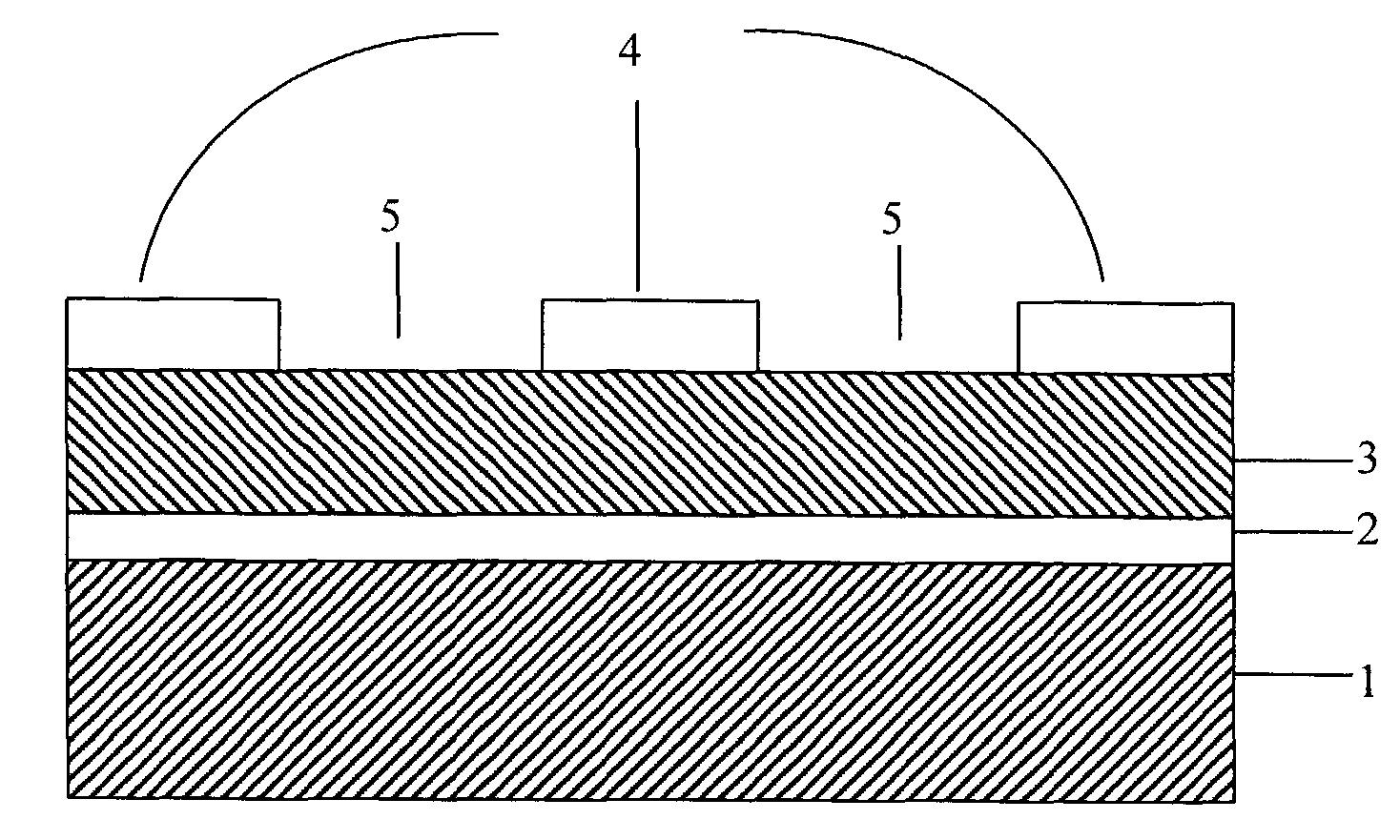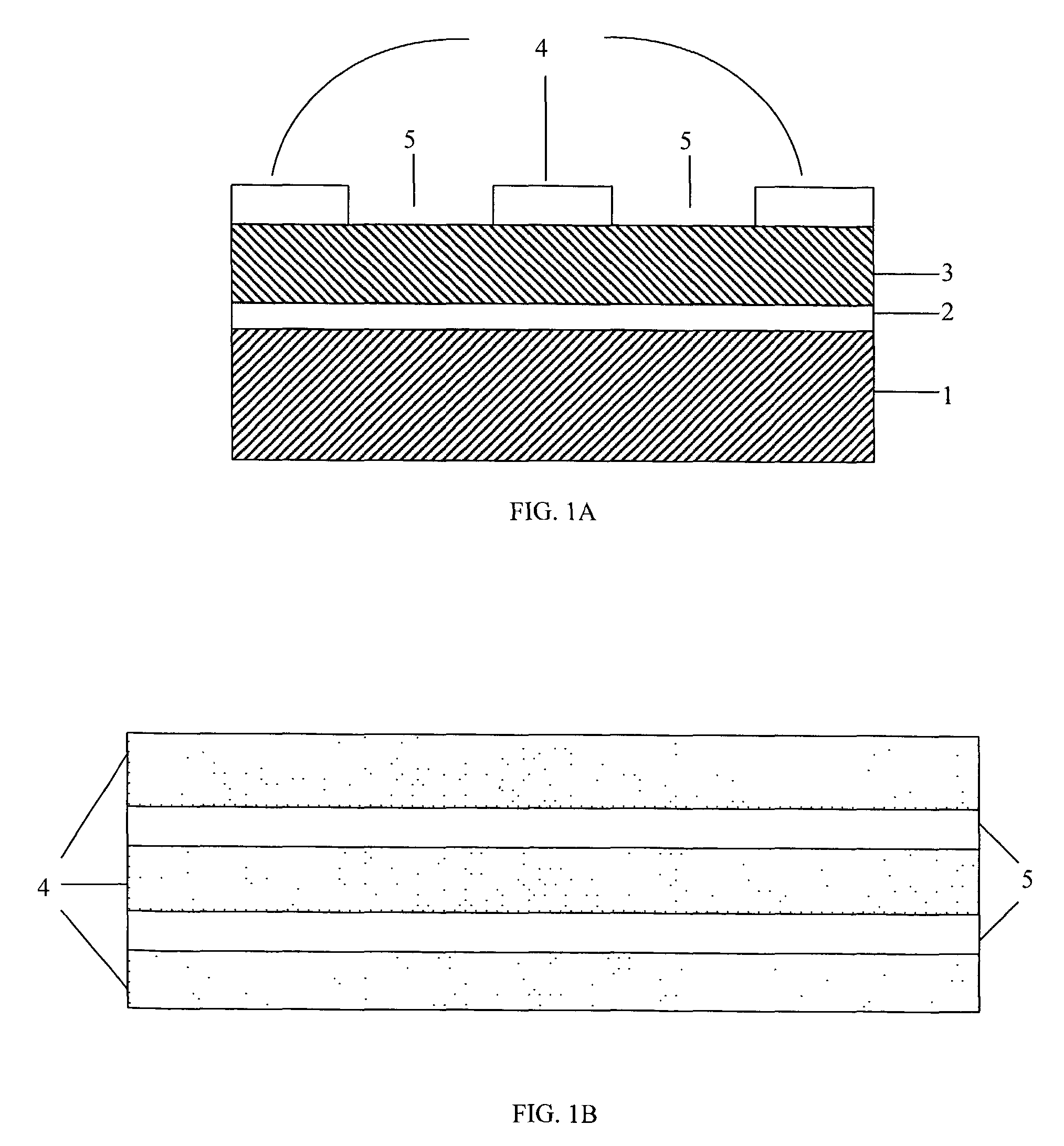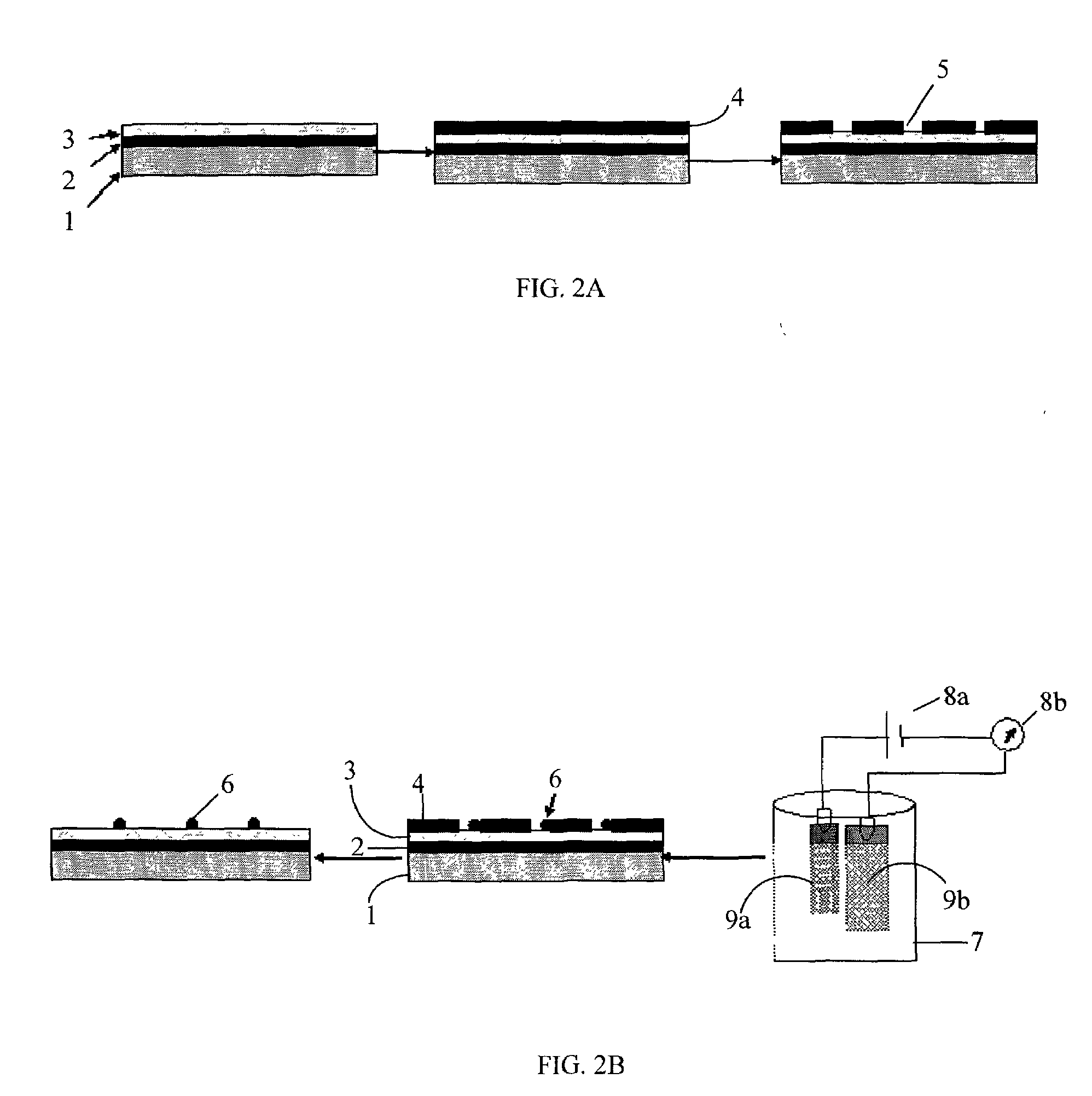Directed Assembly of Carbon Nanotubes and Nanoparticles Using Nanotemplates With Nanotrenches
a technology of carbon nanotubes and nanoparticles, applied in the field of nanoscience and nanotechnology, can solve the problems of limited nanotools and fabrication methods for their assembly, inefficient and tedious, and the manipulation of individual nanoelements, and achieve the effect of high electrical and thermal conductivity and high strength
- Summary
- Abstract
- Description
- Claims
- Application Information
AI Technical Summary
Problems solved by technology
Method used
Image
Examples
example i
Manufacturing a Nanosubstrate for Carbon Nanotube Assembly
[0052]A 5 nm layer of Cr was deposited by sputtering onto an oxidized silicon surface. A 50 nm layer of Au was then deposited by sputtering over the Cr layer. A 150 nm thick PMMA layer was then spun over the surface. Electron beam lithography was used to pattern nanotrenches of various sizes (see subsequent examples) in the PMMA layer. Following exposure, the substrate was developed resulting in the formation of nanotrenches on the PMMA film exposing parts of the gold surface.
example ii
Assembly of Carbon Nanotube Bundles
[0053]The nanosubstrate from Example I was immersed in a 10 ml suspension of 0.01 wt / vol % single wall carbon nanotubes (SWNT) in deionized water. The SWNT were obtained from Carbon Nanotechnologies, Inc. (Houston, Tex.). The pH of the solution was adjusted to 8 by adding ammonium hydroxide solution (final concentration approximately 1 μM). A clean gold substrate placed at a distance of 1 centimeter from the PMMA substrate acted as the cathode. A DC voltage was applied between the two electrodes for 60 seconds, and the current was monitored using a pico-ammeter. An electric field of either 5 V / cm (FIG. 3A) or 3 V / cm (FIG. 3C) resulted in the negatively charged nanotubes being assembled inside the trenches wherever the gold layer was exposed. There were some nanotubes protruding out of the trench, especially at the edges, but these were removed after the PMMA was dissolved (see below).
[0054]Following assembly, the PMMA film was stripped using aceton...
example iii
Effect of Trench Width on Assembly of Carbon Nanotubes
[0056]To investigate the effect of trench width on assembly, nanosubstrates were fabricated with 70 μm long trenches having widths of approximately 350 nm, 250 nm, 150 nm, 100 nm and 50 nm. As seen from the results presented in FIGS. 4-7, the density of nanotubes assembled inside the trenches decreased with the width of the trenches for a given voltage.
PUM
| Property | Measurement | Unit |
|---|---|---|
| length | aaaaa | aaaaa |
| diameter | aaaaa | aaaaa |
| width | aaaaa | aaaaa |
Abstract
Description
Claims
Application Information
 Login to View More
Login to View More - R&D
- Intellectual Property
- Life Sciences
- Materials
- Tech Scout
- Unparalleled Data Quality
- Higher Quality Content
- 60% Fewer Hallucinations
Browse by: Latest US Patents, China's latest patents, Technical Efficacy Thesaurus, Application Domain, Technology Topic, Popular Technical Reports.
© 2025 PatSnap. All rights reserved.Legal|Privacy policy|Modern Slavery Act Transparency Statement|Sitemap|About US| Contact US: help@patsnap.com



